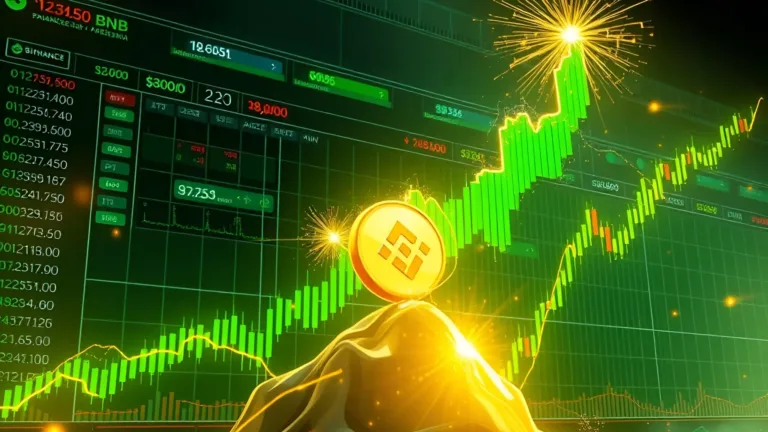Will Polygon Reach $100?
Reaching $100 per POL token stands as an almost unimaginable feat given current market realities.
To achieve this, Polygon would need unprecedented adoption, technological breakthroughs, and institutional backing on a scale never seen before in crypto.
This article examines the extreme conditions required, to assess whether Polygon’s native token could ever realistically approach $100. dramatic global market sentiment shifts.
Key Takeaways:
Hide- InvestX: Highlights the need for unprecedented institutional allocations (10–20% of crypto portfolios) for any chance at $100. (Source: InvestX)
- CCN: Notes a possible 82% rally on a technical breakout, far below the 500× required for $100. (Source: CCN)
- Binance Research: Analyst warns of crash to $0.04 before any sustainable recovery, underscoring high volatility. (Source: Binance)
- CoinCodex: Forecasts a maximum of $1.54 by 2030, reflecting conservative algorithmic modeling. (Source: CoinCodex)
- Benzinga: Emphasizes market-cap math showing $100 implies a $930 billion valuation—statistically improbable. (Source: Benzinga)
Polygon Price Prediction to Hit $100

Here, we analyze the extraordinary prerequisites for Polygon to reach $100. We explore extreme bull-market scenarios, complete Layer-2 supremacy, revolutionary protocol upgrades, and massive institutional and enterprise adoption.
We then examine technical chart conditions, expert skepticism, historical cycles, tokenomics changes, and the sheer market-cap math that underpins a $100 target.
The Implausible Market Conditions for a 500× Surge
Polygon’s circulating supply of roughly 9.3 billion tokens means a $100 price implies a $930 billion market cap.
That would surpass today’s Ethereum and approach Bitcoin’s valuation, requiring a level of capital inflow and value transfer from every other crypto project that is historically unprecedented.
Such a shift demands not just a bull market, but a seismic reallocation of global investment into Polygon (prev Matic).
The Miracle of Polygon 2.0
Polygon 2.0 must deliver revolutionary performance: near-zero fees, instant finality, and ironclad security via zkEVM and its Aggregation Layer.
Only a flawless rollout convincing every developer and user to migrate would justify even a fraction of the valuation needed.
Any delays, bugs, or competing rollup breakthroughs would derail the narrative before it gains traction.
The Unlikely Scenario of Corporate Domination
Major enterprises, Walmart, IBM, Maersk, would need to run mission-critical operations on Polygon, generating billions of daily transactions.
Exclusive reliance by DeFi giants (Aave, Compound) and NFT marketplaces (OpenSea, Blur) would be required to lock in network effects.
Such wholesale migration away from other chains has no precedent and would demand proven, enterprise-grade resilience.
Technical Analysis Reality Check
POL would need to clear its all-time high of $2.91 and never look back, sustaining months or years of higher highs and higher lows.
Indicators like RSI and MACD would have to flash unbroken bullish signals across all timeframes.
Even the most generous Fibonacci extensions fail to plot a credible path to $100 without embracing pure speculation.
Expert Opinions: A Chorus of Doubt
Leading forecasters uniformly cap long-term targets in the single digits. CoinCodex sees a max of $1.54 by 2030; CoinPedia peaks near $4.95; Benzinga’s bull case sits below $1.
Experts warn of potential crashes to $0.04, underlining how a 500× leap is viewed as a non-starter in professional circles.
Historical Context: The Weight of the Past
Polygon’s price history is marked by boom-and-bust cycles, with rapid spikes followed by steep declines.
No crypto asset has ever sustained the continuous exponential growth required to multiply hundreds of times over.
The market’s cyclical nature makes a steady ascent to $100 effectively impossible without rewriting history.
Token Transition: A Sideshow, Not the Main Event
The migration from MATIC to POL tokenomics may boost staking yields slightly, but it won’t generate the trillions in new capital needed.
Token upgrades alone lack the gravitational pull to drive a 500× price increase; real-world utility and adoption must carry the weight.
The Numbers Don’t Lie: The Absurdity of the Math
A $100 POL demands a market cap near $930 billion. Even if the total crypto market doubles or triples, Polygon would need to grab an outsized slice, far beyond its current sub-5% share of Layer-2 activity.
Statistical probability and past precedent both argue against such a concentration of value.
The Verdict: A Fantasy, Not a Forecast
While no outcome is impossible, reaching $100 would require a perfect storm so extreme it borders on fantasy.
Investors should treat this as a stress test of assumptions rather than a viable target.
Focus instead on realistic scenarios in the $1–$10 range, where catalysts and risks can be meaningfully weighed.
Best Practices for Managing Expectations
In this section, we offer best practices to evaluate Polygon’s prospects objectively. These guidelines draw on technical, fundamental, and strategic considerations to help investors set realistic targets, manage risk, and identify credible catalysts rather than chasing a highly improbable $100 outcome.
- Model Multiple Scenarios: Build bull, base, and bear cases with price paths to $1, $5, and $10 rather than $100.
- Track Adoption Metrics: Focus on daily active addresses, TVL growth, and enterprise integrations as tangible milestones.
- Set Technical Alerts: Use breakpoints at $2.91 (all-time high), $5, and $10 to reassess conviction levels.
- Diversify Layer-2 Exposure: Balance MATIC with positions in Arbitrum, Optimism, and zkSync to hedge protocol risk.
- Monitor Upgrade Progress: Follow Polygon 2.0 testnets, zkEVM benchmarks, and mainnet performance for real-time validation.
- Evaluate Institutional Signals: Watch ETF filings, fund allocations, and large-wallet movements for credible capital inflows.
- Stress-Test Capital Allocation: Only allocate what you can afford to lose, given the extreme tail-risk in the $100 scenario.
Closing Remarks
A $100 Polygon token remains a near-impossible target, demanding an unprecedented convergence of market mania, Layer-2 monopoly, revolutionary upgrades, and global regulatory harmony. More plausible outcomes place MATIC in the single-digit range by 2030.
By focusing on measurable adoption metrics, realistic price checkpoints, and diversified risk management, investors can navigate Polygon’s journey without succumbing to fantasy forecasts.
Price predictions to note: sub-$1 through 2025, potential $1–$5 by 2030, with $100 hanging as an extreme outlier.







